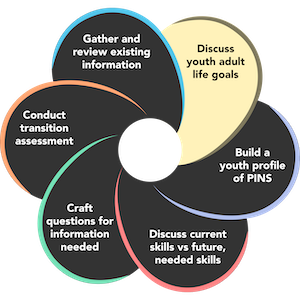Career Development Viewpoint

Career Awareness
Elementary Grades (K-5)
Students become familiar with careers through learning that connects classroom instruction to future work. Career awareness strategies show students various types of careers and stimulate interest in future work.
Career Exploration
Middle Grades (6-8)
Students explore their career interests through embedded activities. Career exploration strategies are opportunities for students to discover work environments and understand the various aspects of the workplace. Strategies include tools and instruments that help students understand and appreciate their strengths and interests. Students start plans for their future with career information and postsecondary education data. Plans include course selection and planning as well as career aspirations and goals.
Career Planning
High School (9-12)
Students continue career exploration while focusing on career planning. Activities provide advanced experiences that offer hands-on opportunities in a workplace.
Career planning strategies focus on making clear links between career options and educational decisions. Students develop the skills to revisit previous exploration and planning strategies as they face career changes throughout life.
Oftentimes we hear ‘my student has unrealistic goals to become an (insert career here)”. By taking the time to show the different skills, experiences, education, etc. for that adult life goal, the youth may feel it is something they do not truly want to pursue and it allows the team to have more conversations about what they liked about that career path or adult life goal and how they can support the student achieving a similar goal that fulfills their true aspirations.

OhioMeansJobs, O*NET, or Career One Stop are all good resources to show those skills, abilities, and education needed for specific careers.
